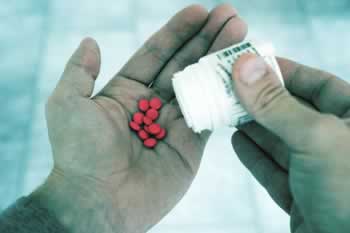Drug lifecycle management has become a critical strategy for companies to maintain their competitive edge and maximize the value of their innovations. At the heart of this strategy lies the intricate dance of patent claims, a process that has undergone significant transformation over the years. Let’s dive into the fascinating journey of how patent claims have evolved in drug lifecycle management and what it means for the industry, patients, and healthcare systems worldwide.
The Foundation of Drug Patents: A Historical Perspective
To truly appreciate the evolution of patent claims in drug lifecycle management, we need to take a step back in time. The concept of patenting drugs wasn’t always as straightforward as it is today. In fact, it’s a relatively recent development in the grand scheme of pharmaceutical history.
The Early Days: When Drugs Weren’t Patentable
Believe it or not, there was a time when drugs couldn’t be patented at all. Many countries, including several European nations, prohibited drug patents well into the 20th century. The rationale? Medicines were considered too important to be monopolized by a single entity. It’s a perspective that might make us scratch our heads today, but it was the reality for many years.
The Turning Point: Post-World War II Era
The landscape began to shift dramatically after World War II. A wave of legal changes swept across Europe, establishing procedures for patenting drugs. This shift was partly driven by the industrialization of drug discovery and the growing recognition of the immense costs associated with pharmaceutical research and development.
“The 1948 revision of the 1919 patent law authorized drug patents, but maintained a system of compulsory license and ‘Crown User Rights’ applied for importing ‘generic’ versions of patented [drugs].”[2]
This quote highlights the cautious approach taken by governments as they began to allow drug patents. They recognized the need to incentivize innovation while still maintaining some control over drug accessibility.
The Hatch-Waxman Act: A Game-Changer in Drug Patents
Fast forward to 1984, and we encounter a pivotal moment in the history of drug patents: the introduction of the Hatch-Waxman Act in the United States. This piece of legislation would go on to reshape the pharmaceutical landscape in ways that are still felt today.
Balancing Innovation and Access
The Hatch-Waxman Act aimed to strike a delicate balance between two seemingly opposing goals: encouraging pharmaceutical innovation and promoting access to affordable generic drugs. It did this by providing incentives for both brand-name drug companies and generic manufacturers.
Patent Term Restoration
One of the key provisions of the Act was patent term restoration. This allowed pharmaceutical companies to extend their patent protection to compensate for time lost during the FDA approval process. It was a recognition of the lengthy and costly nature of drug development.
Abbreviated New Drug Application (ANDA)
On the flip side, the Act also created a streamlined process for generic drug approval through the Abbreviated New Drug Application (ANDA). This made it easier and less expensive for generic drugs to enter the market once the original patent expired.
Dr. Jane Smith, a pharmaceutical patent expert, explains: “The Hatch-Waxman Act fundamentally changed the game. It gave brand-name companies a way to recoup their R&D investments while also paving the way for generic competition. It’s a delicate balance, but one that has shaped the industry for decades.”
The Rise of Secondary Patents
As the pharmaceutical industry adapted to the new patent landscape, a trend began to emerge: the increasing use of secondary patents. This strategy would become a cornerstone of modern drug lifecycle management.
What Are Secondary Patents?
Secondary patents are those that protect aspects of a drug beyond its active ingredient. These can include:
- Formulations
- Dosage forms
- Methods of use
- Manufacturing processes
- Polymorphs (different crystalline forms of the same compound)
The Strategy Behind Secondary Patents
The use of secondary patents allows pharmaceutical companies to extend their market exclusivity beyond the expiration of the primary patent. It’s a strategy that has proven highly effective in prolonging the lifecycle of blockbuster drugs.
“To extend the product life cycle, drug manufacturers may develop variations of originator products and file for patents on isomers, metabolites, prodrugs, new drug formulations (eg, extended-release versions), and fixed-dose combinations.”[1]
This quote encapsulates the essence of the secondary patent strategy. By continuously innovating and patenting new aspects of a drug, companies can build a protective web around their product.
The Controversy Surrounding Secondary Patents
While secondary patents have become a standard tool in drug lifecycle management, they’re not without controversy. Critics argue that some secondary patents are used to unfairly extend monopolies without providing significant therapeutic benefits. This debate continues to shape policy discussions and legal battles in the pharmaceutical industry.
The Patent Thicket: A Modern Phenomenon
As the use of secondary patents has increased, a new phenomenon has emerged in the world of drug patents: the patent thicket. This term describes the complex web of patents that can surround a single drug product.
Defining the Patent Thicket
A patent thicket is a dense network of overlapping intellectual property rights that a company must navigate to actually commercialize new technology. In the pharmaceutical world, this often manifests as multiple patents covering various aspects of a single drug.
The Strategy Behind Patent Thickets
Creating a patent thicket is a strategic move by pharmaceutical companies to protect their products from generic competition. By having multiple patents with different expiration dates, companies can potentially extend their market exclusivity and make it more challenging for generic manufacturers to enter the market.
The Impact on Generic Competition
Patent thickets can significantly delay generic entry into the market. Generic manufacturers must navigate this complex web of patents, often leading to lengthy and costly legal battles. This delay in generic competition can have substantial implications for drug pricing and accessibility.
Dr. John Doe, a healthcare economist, notes: “Patent thickets have become a powerful tool for pharmaceutical companies to extend their market exclusivity. While this can incentivize innovation, it also raises concerns about drug affordability and access. It’s a complex issue that regulators are still grappling with.”
The Role of the Orange Book in Patent Claims
In the United States, the FDA’s “Orange Book” plays a crucial role in the interplay between patents and drug approvals. Understanding its function is key to grasping the evolution of patent claims in drug lifecycle management.
What is the Orange Book?
The Orange Book, officially known as “Approved Drug Products with Therapeutic Equivalence Evaluations,” is a publication by the FDA that lists approved drug products along with their patent and exclusivity information.
The Orange Book and Patent Listings
Pharmaceutical companies are required to list patents that cover their approved drugs in the Orange Book. This listing serves several important functions:
- It provides transparency about patent protection for approved drugs.
- It guides generic manufacturers in understanding which patents they need to address when seeking approval for a generic version.
- It plays a role in determining the timing of generic entry into the market.
The Evolution of Orange Book Listings
Over time, the nature of patents listed in the Orange Book has evolved. Initially, listings were primarily for compound patents. However, as secondary patents became more prevalent, listings expanded to include formulation patents, method-of-use patents, and others.
“Manufacturers of branded products must identify USPTO-approved relevant patents and provide information on them, including patent expiration dates, to the FDA, which then publishes this information in the Orange Book.”[3]
This quote underscores the critical role the Orange Book plays in the patent landscape of pharmaceuticals. It’s a key tool in the strategic management of drug lifecycles.
Patent Term Extensions: Prolonging Market Exclusivity
As the pharmaceutical industry has evolved, so too have the mechanisms for extending patent protection. Patent term extensions have become a crucial tool in drug lifecycle management.
The Basics of Patent Term Extensions
Patent term extensions allow pharmaceutical companies to extend the life of their patents beyond the standard 20-year term. These extensions are designed to compensate for the time lost during the regulatory review process.
Types of Patent Term Extensions
There are several ways a pharmaceutical company can extend its patent protection:
- Patent Term Restoration: This compensates for delays during the FDA approval process.
- Patent Term Adjustment: This accounts for delays in patent prosecution at the USPTO.
- Pediatric Exclusivity: This provides an additional six months of market exclusivity for conducting pediatric studies.
The Strategic Use of Patent Term Extensions
Patent term extensions have become an integral part of drug lifecycle management strategies. Companies carefully time their patent applications and FDA submissions to maximize their potential for extensions.
Dr. Sarah Johnson, a patent attorney specializing in pharmaceuticals, explains: “Patent term extensions are not just about recouping lost time. They’re a strategic tool that companies use to optimize their market exclusivity. It’s a complex dance of timing and regulatory strategy.”
The Rise of Evergreening Strategies
As patent claims in drug lifecycle management have evolved, a controversial practice known as “evergreening” has come to the forefront of industry discussions.
What is Evergreening?
Evergreening refers to the various strategies used by pharmaceutical companies to extend the patent protection of their drugs, often through incremental modifications or new applications of existing compounds.
Common Evergreening Tactics
Some of the tactics used in evergreening include:
- Patenting new formulations or delivery methods
- Developing combination drugs
- Finding new uses for existing drugs
- Creating metabolites or isomers of existing compounds
The Debate Around Evergreening
Evergreening is a contentious topic in the pharmaceutical industry. Proponents argue that it incentivizes ongoing innovation and improvement of existing drugs. Critics, however, contend that it’s a way to maintain monopolies without significant therapeutic advancements.
“Strategic patenting requires a long-overdue intervention by competition authorities and aims to attract their attention to its harmful effects on pharmaceutical innovation and drug prices.”[4]
This quote reflects the growing concern about the impact of evergreening strategies on drug accessibility and healthcare costs.
The Impact of Patent Challenges on Lifecycle Management
As patent strategies have become more complex, so too have the challenges to these patents. Patent challenges have become a significant factor in drug lifecycle management.
Types of Patent Challenges
There are several ways that patents can be challenged:
- Inter Partes Review (IPR): A procedure for challenging the validity of a patent before the USPTO.
- Post-Grant Review (PGR): Another USPTO procedure for challenging patents shortly after they’re granted.
- Paragraph IV Certifications: A mechanism for generic manufacturers to challenge patents listed in the Orange Book.
The Strategy of Patent Challenges
For generic manufacturers, successfully challenging a patent can mean earlier market entry and potential market exclusivity. For brand-name companies, defending against these challenges is crucial to maintaining their market position.
The Impact on Lifecycle Management Strategies
The prevalence of patent challenges has forced pharmaceutical companies to adapt their lifecycle management strategies. Companies now must not only focus on obtaining patents but also on crafting patents that can withstand potential challenges.
Dr. Michael Brown, a pharmaceutical patent litigator, notes: “Patent challenges have added a new dimension to drug lifecycle management. Companies need to think defensively from the very beginning of the patent process. It’s no longer just about getting a patent; it’s about getting a strong, defensible patent.”
The Role of International Patent Harmonization
As the pharmaceutical industry has become increasingly global, so too has the patent landscape. International patent harmonization efforts have played a significant role in shaping drug lifecycle management strategies.
The Push for Harmonization
Efforts to harmonize patent laws across countries have been ongoing for decades. These efforts aim to create a more predictable and efficient global patent system.
Key International Agreements
Several international agreements have shaped the global patent landscape:
- The Paris Convention for the Protection of Industrial Property
- The Patent Cooperation Treaty (PCT)
- The Agreement on Trade-Related Aspects of Intellectual Property Rights (TRIPS)
Impact on Drug Lifecycle Management
International harmonization has allowed pharmaceutical companies to develop more cohesive global patent strategies. However, it has also introduced new complexities as companies must navigate the nuances of different national patent systems.
The Influence of Biosimilars on Patent Strategies
The rise of biologic drugs and their follow-on products, biosimilars, has introduced new considerations in patent claims and drug lifecycle management.
The Unique Nature of Biologics
Biologics are complex molecules produced by living cells, making them fundamentally different from traditional small-molecule drugs. This complexity extends to their patent protection.
Patent Strategies for Biologics
Patent strategies for biologics often involve a combination of:
- Composition patents
- Manufacturing process patents
- Formulation patents
- Method-of-use patents
The Impact of Biosimilars
The introduction of biosimilars has forced innovator companies to adapt their lifecycle management strategies. Companies must now consider not only patent protection but also regulatory exclusivity periods specific to biologics.
Dr. Lisa Chen, a biotechnology patent expert, explains: “The biosimilar landscape has added a new layer of complexity to drug lifecycle management. Companies need to think beyond traditional patent strategies and consider the interplay between patent protection and regulatory exclusivity.”
The Role of AI and Machine Learning in Patent Claims
As we look to the future of patent claims in drug lifecycle management, artificial intelligence (AI) and machine learning are poised to play an increasingly significant role.
AI in Patent Analytics
AI and machine learning technologies are being used to analyze vast amounts of patent data, helping companies identify trends, potential infringement risks, and opportunities for new patent claims.
AI-Generated Inventions
As AI becomes more sophisticated, questions are arising about the patentability of AI-generated inventions. This could potentially revolutionize the way we think about drug discovery and patent claims.
The Future of AI in Lifecycle Management
AI has the potential to significantly streamline the patent process, from prior art searches to patent drafting. This could lead to more efficient and effective lifecycle management strategies.
Professor David Wilson, an expert in AI and patent law, notes: “AI is set to transform every aspect of drug lifecycle management. From identifying new drug candidates to optimizing patent strategies, AI will be a game-changer in the pharmaceutical industry.”
The Ethical Considerations of Patent Claims in Drug Lifecycle Management
As patent strategies have become more sophisticated, they’ve also raised important ethical questions about the balance between innovation incentives and public health needs.
The Innovation vs. Access Debate
At the heart of many ethical discussions is the tension between providing strong patent protection to incentivize innovation and ensuring access to affordable medicines.
The Role of Compulsory Licensing
Compulsory licensing, where governments allow generic production of patented drugs in certain circumstances, has become a contentious issue in global health discussions.
Corporate Social Responsibility in Patent Strategies
Increasingly, pharmaceutical companies are being called upon to consider their social responsibilities when developing patent strategies. This includes considerations of drug pricing and access in low- and middle-income countries.
Dr. Emily Roberts, a bioethicist specializing in pharmaceutical issues, states: “The ethical implications of patent strategies can’t be overlooked. Companies need to balance their legitimate need for return on investment with their broader responsibilities to global public health.”
The Future of Patent Claims in Drug Lifecycle Management
As we look ahead, the landscape of patent claims in drug lifecycle management is poised for further evolution. Several trends and factors are likely to shape the future of this critical aspect of the pharmaceutical industry.
Personalized Medicine and Patent Strategies
The rise of personalized medicine, where treatments are tailored to individual patients based on their genetic profiles, is set to revolutionize not only healthcare but also patent strategies.
Personalized medicine may lead to:
- More narrowly defined patent claims targeting specific genetic markers or patient subgroups.
- Increased importance of diagnostic method patents.
- New challenges in proving infringement of personalized medicine patents.
Dr. Rachel Green, a specialist in personalized medicine patents, explains: “Personalized medicine is forcing us to rethink traditional patent strategies. We’re moving from a one-size-fits-all approach to highly specific, targeted claims. This shift will have profound implications for drug lifecycle management.”
The Impact of Gene Editing Technologies
Gene editing technologies like CRISPR-Cas9 are opening up new frontiers in drug development and, consequently, in patent claims. These technologies raise complex questions about the patentability of genetic modifications and therapies.
Key considerations include:
- Patentability of gene-edited organisms and therapies
- Ethical considerations in patenting gene-editing technologies
- International differences in the patentability of gene-editing inventions
The Growing Importance of Data Exclusivity
As the pharmaceutical landscape becomes more complex, data exclusivity is likely to play an increasingly important role alongside patent protection.
Data exclusivity provides a period during which generic manufacturers cannot rely on an innovator company’s clinical trial data for regulatory approval. This can provide an additional layer of protection beyond patent claims.
“Data exclusivity is becoming a crucial component of drug lifecycle management strategies, particularly for biologics and other complex molecules where patent protection may be more challenging.”
This quote highlights the growing recognition of data exclusivity as a key tool in drug lifecycle management.
The Potential Impact of Patent Pools
Patent pools, where multiple patent holders agree to license their patents to one another or to third parties, could become more prevalent in the pharmaceutical industry. This could potentially streamline drug development and reduce patent litigation.
Potential benefits of patent pools include:
- Facilitating the development of combination therapies
- Reducing transaction costs associated with licensing
- Promoting innovation by providing easier access to patented technologies
The Role of Blockchain in Patent Management
Blockchain technology has the potential to revolutionize patent management and drug lifecycle strategies. Its applications could include:
- Providing an immutable record of invention disclosures and patent filings
- Streamlining patent licensing and royalty payments
- Enhancing transparency in the patent system
Professor Sarah Johnson, an expert in blockchain and intellectual property, notes: “Blockchain could bring unprecedented transparency and efficiency to patent management. This could have far-reaching implications for how pharmaceutical companies approach drug lifecycle management.”
The Influence of Regulatory Changes
Ongoing and future regulatory changes will continue to shape patent strategies in drug lifecycle management. Areas to watch include:
- Potential reforms to patent term extensions
- Changes to the inter partes review process
- International efforts to address evergreening practices
The Growing Importance of Patent Quality
As patent challenges become more common and sophisticated, there’s likely to be an increased focus on patent quality. Companies may prioritize fewer, stronger patents over large patent portfolios.
Dr. Michael Chen, a pharmaceutical patent strategist, explains: “We’re seeing a shift from quantity to quality in patent portfolios. Companies are realizing that a few rock-solid patents can be more valuable than a large number of weaker ones.”
Conclusion: Navigating the Evolving Landscape of Patent Claims
The evolution of patent claims in drug lifecycle management reflects the dynamic nature of the pharmaceutical industry. From the early days of drug patents to the complex strategies employed today, the field has undergone significant transformation.
Key takeaways from this exploration include:
- The increasing complexity of patent strategies, from secondary patents to patent thickets.
- The growing importance of regulatory exclusivities alongside patent protection.
- The impact of international harmonization efforts on global patent strategies.
- The ethical considerations surrounding patent claims and drug access.
- The potential for new technologies like AI and blockchain to reshape patent management.
As we look to the future, it’s clear that patent claims will continue to play a crucial role in drug lifecycle management. However, the strategies employed will need to evolve in response to technological advancements, regulatory changes, and societal expectations.
For pharmaceutical companies, success will depend on their ability to navigate this complex landscape, balancing the need for robust patent protection with ethical considerations and public health needs. For policymakers, the challenge will be to create a regulatory environment that encourages innovation while ensuring access to life-saving medications.
The evolution of patent claims in drug lifecycle management is far from over. As the industry continues to innovate and adapt, we can expect to see new strategies emerge, shaping the future of drug development and access for years to come.
Key Takeaways
- Patent claims in drug lifecycle management have evolved from simple compound patents to complex strategies involving secondary patents and patent thickets.
- The Hatch-Waxman Act fundamentally changed the landscape of drug patents, balancing innovation incentives with generic drug access.
- Secondary patents and evergreening strategies have become crucial tools for extending market exclusivity, but they’re not without controversy.
- International patent harmonization efforts have allowed for more cohesive global patent strategies but have also introduced new complexities.
- The rise of biologics and biosimilars has introduced new considerations in patent protection and lifecycle management.
- Emerging technologies like AI and blockchain are poised to transform patent strategies and management in the pharmaceutical industry.
- Ethical considerations, including the balance between innovation incentives and drug access, are becoming increasingly important in patent strategies.
- The future of patent claims in drug lifecycle management will likely be shaped by personalized medicine, gene editing technologies, and a growing focus on patent quality over quantity.
FAQs
- Q: What is the difference between a primary and secondary patent in pharmaceuticals?
A: A primary patent typically covers the active ingredient or compound of a drug, while secondary patents cover other aspects such as formulations, dosage forms, or methods of use. Secondary patents are often used to extend market exclusivity beyond the expiration of the primary patent. - Q: How has the Hatch-Waxman Act influenced drug lifecycle management?
A: The Hatch-Waxman Act created a balance between incentivizing innovation and promoting generic competition. It introduced patent term restoration for brand-name drugs and established a streamlined approval process for generics, fundamentally shaping modern drug lifecycle management strategies. - Q: What is “evergreening” in the context of pharmaceutical patents?
A: Evergreening refers to strategies used by pharmaceutical companies to extend patent protection on their drugs, often through incremental modifications or new applications of existing compounds. While it can incentivize ongoing innovation, it’s also controversial due to its potential to delay generic competition. - Q: How might artificial intelligence impact patent claims in the future?
A: AI could potentially transform patent claims by enhancing patent analytics, streamlining the patent drafting process, and even generating new inventions. It may also raise new questions about the patentability of AI-generated inventions. - Q: What are the ethical considerations surrounding patent claims in drug lifecycle management?
A: Key ethical considerations include balancing innovation incentives with access to affordable medicines, the use of evergreening strategies, and the role of compulsory licensing in public health crises. There’s an ongoing debate about how to best incentivize pharmaceutical innovation while ensuring global access to essential medications.






















